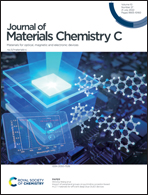Mimicking biological synaptic plasticity with a leaky charge-trap FinFET†
Abstract
Proposed future computing systems may be based on electronic devices which mimic the synaptic plasticity of biological brains. Even though various electronic devices have been proposed to emulate synaptic functions, to date scalability, large-scale integration, productivity, and co-integration with control circuits in a single chip have not been achieved. This work demonstrates a highly scalable and 3-dimensional (3-D) structured leaky charge-trap (LCT) fin-shaped field effect transistor (FinFET) fabricated using 100% Complementary Metal-Oxide-Semiconductor (CMOS) compatible materials and processes. This LCT-FinFET emulated synaptic plasticity with a post-synaptic current (PSC), which is analogous to the post-synaptic potential (PSP) observed in biological synapses. In addition, various synaptic functions used to strengthen all five representative types of synaptic plasticity, spike-amplitude dependent plasticity (SADP), spike-duration dependent plasticity (SDDP), spike-frequency dependent plasticity (SFDP), spike-number dependent plasticity (SNDP), and spike-timing-dependent plasticity (STDP), were artificially mimicked using paired-pulse facilitation (PPF) in the LCT-FinFET. Similar to the physiological processes of memorizing and forgetting in the human brain, short-term memory (STM) devices resulting from inherent leaky gate dielectrics of the LCT-FinFET were reinforced to form long-term memory (LTM) devices by rehearsing pre-synaptic spikes.



 Please wait while we load your content...
Please wait while we load your content...